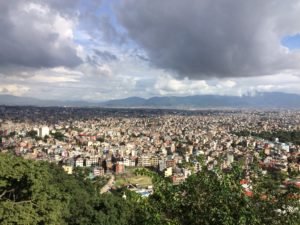Experience First, Process Later
I remember a good friend six years ago asking while I was on my pulgrimage through the West if I was going to unplug for a period and just experience the pilgrimage without the need to blog daily changing the lens that I used and thus changing the rxperience. I knew there was wisdom in her suggestion even though I remained committed to inviting people into the rawness of my daily experience. And while I knew that was the right thing then I also knew that that cimmitment chsnged my experience. I remember many days when I was already writing the blog in my head as I rode. Rather than just experiencing a dramatic thunder and lighting storm my mind was already shaping the narrative before the had even stopped.
The view of Karhmandu from the rooftop cafe at the Hindu Monkey Temple.
I am going to do it differently this time. Of course I had to be slightly coerced into it. I confirmed two weeks ago that internet and cell coverage will be very spotty and should expect only 3-4 places where blogging could even br possible. Many days we will just be camped alongside the road as we make the 12-day trek up to Everest Base Camp.
I do want to share this journey with you, but I have committed to protecting the experience of it first and processing and sharing it only second.If you want more regular updates please make a friend request on Facebook. I am likely to post a few pictures there with just a note or two about what I am experiencing.For today let me just share that I wasable to witness a Hindu cremation ceremony on the Bagmati River in Kathmandu. It brought tears to my eyes as I witnessed the family prepare the body, adorn it, carry it to the prepared funeral pyre, and then follow what was obvoously a prescribed funeral ritual before lighting the wood on fire. Most folks stood by reverently as they said goodbye to this friend/ loved one while one woman wailed in the background held by four or five other women who may have been jeld themselves like this at one time.What was especially intriguing was how public this ritual of gratitude, lettong go and mourning was. Three others bodies were lined up obviously awaiting the full community of celebrants/ mourners to arrive. Hundreds of people--tourists, locals, religious adherents and who knows who else milled about as if this was just another day to come to market.Life went on. Bodies were burned. Beggars begged. Tourists snspped pictures. Monkets fought over scraps and death was just another part of another day in a long series of days and years that ends scattered in the womb of the river just as it begins in the mother's womb.äBike is still not here. I am becoming less philosophical about it and more annoyed as I set off tomorrow on a borrowed bike with only half the gear I planned for and wearing the same increasingly stinky socks for the fourth day in a row.My six other cycling friends have offered to share gear to get me through the next couple of days including a vivid pink jersey from one young woman. I might have to learn to accept help. Geez! Climbing Everest is easy. Accepting help? Now that's going to be the resl challenge!Complicated, unpredictable journey ahead. I'll post, but only when technology, space, schedule and mood allow. Experience first. Process later.
Mountains and Sanctuaries
I am counting the days now. 18 days until I fly off to Kathmandu, Nepal to join a group of crazy, enthusiastic and hopefully fit cyclists to make an attempt to reach Everest Base Camp on the Tibet side of the border. As I near the day my anticipation grows as well as a feeling of humility for what we are about to embark on.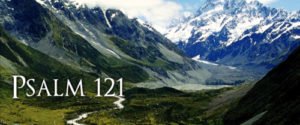 Yesterday I preached a sermon on Psalm 121 with the title "I Lift Up My Eyes to the Hills" which was the original source of this short, but ambitious pilgrimage and writing project. In my preparation I did a little research on the spiritual significance of Mt. Everest to the people who live under her watchful eye. I discovered that the Tibetan name is Chomolungma which means Goddess Mother of the World. In Nepalese the name is Sagarmatha which is translated similarly as Goddess Mother of the Sky.I suddenly gained a whole new appreciation for what we are about to embark on. I knew that I already felt a spiritual pull to climb this mountain on my bike, but the best that I could understand about my motivation was the deeply satisfying feeling of accomplishment that accompanies climbing what is within a few hundred feet of the highest "motorable road in the world." (My original plan was to cycle to Khardung La Pass which reaches another 300 feet in altitude, but that trip was cancelled. Everest Base Camp was not a bad Plan B!).But this week when I discovered that the local Tibetans and Nepalese called Mt. Everest a name that was associated with the "goddess mother" I was suddenly reminded that this is not just an athletic feat, but an invitation by another culture and by the Universe itself to cycle on sacred ground. Mt. Everest is not just a mountain, but the home of the gods and the object of religious and spiritual devotion.
Yesterday I preached a sermon on Psalm 121 with the title "I Lift Up My Eyes to the Hills" which was the original source of this short, but ambitious pilgrimage and writing project. In my preparation I did a little research on the spiritual significance of Mt. Everest to the people who live under her watchful eye. I discovered that the Tibetan name is Chomolungma which means Goddess Mother of the World. In Nepalese the name is Sagarmatha which is translated similarly as Goddess Mother of the Sky.I suddenly gained a whole new appreciation for what we are about to embark on. I knew that I already felt a spiritual pull to climb this mountain on my bike, but the best that I could understand about my motivation was the deeply satisfying feeling of accomplishment that accompanies climbing what is within a few hundred feet of the highest "motorable road in the world." (My original plan was to cycle to Khardung La Pass which reaches another 300 feet in altitude, but that trip was cancelled. Everest Base Camp was not a bad Plan B!).But this week when I discovered that the local Tibetans and Nepalese called Mt. Everest a name that was associated with the "goddess mother" I was suddenly reminded that this is not just an athletic feat, but an invitation by another culture and by the Universe itself to cycle on sacred ground. Mt. Everest is not just a mountain, but the home of the gods and the object of religious and spiritual devotion.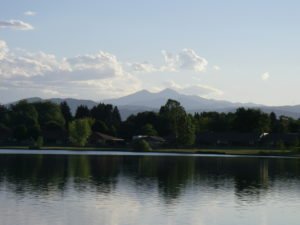 Of course, I should have known that ahead of time. I used to use Long's Peak in Colorado as the object of spontaneous meditations while growing up. Long's Peak was as temperamental as a teenager entering puberty. One day she would be calm and serene. Another day she would be threatening and frighteningly dangerous. But every day was an opportunity to meditate on the personality of the Sacred and the mysterious seasons of Life.All of this got me thinking about those things in our lives that pitch our minds, our hearts and our souls to something deeper, something more mysterious, something divinely beautiful. I am currently working my way through John O'Donohue's book Beauty: Rediscovering the True Sources of Compassion, Serenity, and Hope. He has it broken down into very convenient two to four paragraph sections that make it ideal for my morning meditations.
Of course, I should have known that ahead of time. I used to use Long's Peak in Colorado as the object of spontaneous meditations while growing up. Long's Peak was as temperamental as a teenager entering puberty. One day she would be calm and serene. Another day she would be threatening and frighteningly dangerous. But every day was an opportunity to meditate on the personality of the Sacred and the mysterious seasons of Life.All of this got me thinking about those things in our lives that pitch our minds, our hearts and our souls to something deeper, something more mysterious, something divinely beautiful. I am currently working my way through John O'Donohue's book Beauty: Rediscovering the True Sources of Compassion, Serenity, and Hope. He has it broken down into very convenient two to four paragraph sections that make it ideal for my morning meditations.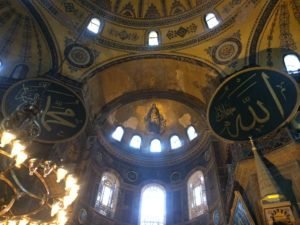 This week he reminded me of the place that houses of worship have played in people's lives for millenia. He wrote of these places as being "sanctuaries of absolute presence". But he grieves that modern people walk and drive by these sanctuaries every day completely unaware of their "divine welcome." He reminded me that at one time communities would raise money for years on end in order to erect a sanctuary in their town. It took years because a real sanctuary wasn't just four walls with movable folding chairs and an all-purpose room that could function as worship space, fellowship hall, gym, and yoga studio. A real sanctuary took thought and intention to create a worshipful atmosphere that pitched the mind, the heart and the soul to that mysterious presence we often call God or the Sacred. High arched ceilings, stained glass windows, and entryways that caused even the most skeptical to feel that they were standing on holy ground as they entered.I realized as I read O'Donohue's reminder of the role that sanctuaries played in our communities at the same time that I was preparing to climb the bottom half of Mt. Everest that I experience a similar invitation in both--that is, the invitation to pitch my mind, my heart and my soul to the deeper mystery of Life.Mountains are sanctuary for me. I can't stare at a magnificently carved mountain without feeling that God Herself (remember Mt. Everest is the Goddess Mother!) is inviting me to dance with her. I can't climb over the ridges and passes without feeling like the mountain is my lover. And I have the same experience in a worship space that is intricately and intentionally designed to draw out my soulful impulses. When the light is just right, the preaching is poetic, the music is heartfelt and the silences are loud that same feeling of awe and intimacy that I feel on with the mountain permeates my soul.
This week he reminded me of the place that houses of worship have played in people's lives for millenia. He wrote of these places as being "sanctuaries of absolute presence". But he grieves that modern people walk and drive by these sanctuaries every day completely unaware of their "divine welcome." He reminded me that at one time communities would raise money for years on end in order to erect a sanctuary in their town. It took years because a real sanctuary wasn't just four walls with movable folding chairs and an all-purpose room that could function as worship space, fellowship hall, gym, and yoga studio. A real sanctuary took thought and intention to create a worshipful atmosphere that pitched the mind, the heart and the soul to that mysterious presence we often call God or the Sacred. High arched ceilings, stained glass windows, and entryways that caused even the most skeptical to feel that they were standing on holy ground as they entered.I realized as I read O'Donohue's reminder of the role that sanctuaries played in our communities at the same time that I was preparing to climb the bottom half of Mt. Everest that I experience a similar invitation in both--that is, the invitation to pitch my mind, my heart and my soul to the deeper mystery of Life.Mountains are sanctuary for me. I can't stare at a magnificently carved mountain without feeling that God Herself (remember Mt. Everest is the Goddess Mother!) is inviting me to dance with her. I can't climb over the ridges and passes without feeling like the mountain is my lover. And I have the same experience in a worship space that is intricately and intentionally designed to draw out my soulful impulses. When the light is just right, the preaching is poetic, the music is heartfelt and the silences are loud that same feeling of awe and intimacy that I feel on with the mountain permeates my soul. I write this as a reminder to myself and others that spiritual worship is not just the domain of the church and any old worship space. Nor is spiritual worship just the domain of the nature purist who is as religious about their Sunday hikes and kayaking adventures as the Sunday faithful who sit in the pews. I think spiritual worship is anything that has the ability to pitch our minds, our hearts and our souls to something deeper, something more mysterious, something divinely beautiful.In eighteen days I will leave for the Goddess Mother of the World--Mt. Everest. I will miss four Sundays of preaching. But I don't think I'll miss a single day of worship. I'll be worshiping with each pedal stroke.I have a good life.
I write this as a reminder to myself and others that spiritual worship is not just the domain of the church and any old worship space. Nor is spiritual worship just the domain of the nature purist who is as religious about their Sunday hikes and kayaking adventures as the Sunday faithful who sit in the pews. I think spiritual worship is anything that has the ability to pitch our minds, our hearts and our souls to something deeper, something more mysterious, something divinely beautiful.In eighteen days I will leave for the Goddess Mother of the World--Mt. Everest. I will miss four Sundays of preaching. But I don't think I'll miss a single day of worship. I'll be worshiping with each pedal stroke.I have a good life.
Spiritual Coming Home
“He was born in the summer of his 27th year…”
I promised that my next blog post as I prepare to cycle up near Everest Base Camp in the Himalayas would be a reflection on John Denver’s song Rocky Mountain High. I have friends and family who roll their eyes when I quote John Denver as if I had never grown out of children’s fairy tales. When my son was a wild teenager he would often tease me that I loved music about teddy bears, rainbows and dancing unicorns. He’s a funny one!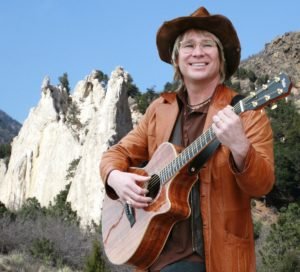 The truth is I have grown out of much of John Denver’s repertoire as I often prefer music with a little more poetic and tonal edge. But John Denver had a few really great lines and great songs that have stuck with me all these years and this verse from Rocky Mountain High is one of them. For a pastor who sometimes gets asked, "Are you born again?" John Denver takes what is often a religious litmus test and gives it a much broader and more accessible read.“He was born in the summer of his 27th year,Coming home to a place he’d never been before.”In the third chapter of John in the Christian New Testament Jesus tells a curious Nicodemus that he must be born of the flesh and Spirit. Nicodemus, clearly taking Jesus literally asks, "How can one be born when one is old? Can one enter into the mother's womb again?" I am sure that Jesus was shaking his head thinking, "You're just not getting it! I am not talking about physical birth. I am talking about spiritual birth."And this is where the late John Denver hones in on Jesus' message better than any Christian who has tried to corner me with their "born again" litmus test. "He was born in the summer of his 27th year...coming home to a place he'd never been before."Being born again and coming home. The language of being "born again" has become so over-used and misused in some circles that it has virtually lost its meaning for many folks. In fact, if they even smell a conversation going that direction you can guarantee they will suddenly remember an appointment that they hadn't yet scheduled.
The truth is I have grown out of much of John Denver’s repertoire as I often prefer music with a little more poetic and tonal edge. But John Denver had a few really great lines and great songs that have stuck with me all these years and this verse from Rocky Mountain High is one of them. For a pastor who sometimes gets asked, "Are you born again?" John Denver takes what is often a religious litmus test and gives it a much broader and more accessible read.“He was born in the summer of his 27th year,Coming home to a place he’d never been before.”In the third chapter of John in the Christian New Testament Jesus tells a curious Nicodemus that he must be born of the flesh and Spirit. Nicodemus, clearly taking Jesus literally asks, "How can one be born when one is old? Can one enter into the mother's womb again?" I am sure that Jesus was shaking his head thinking, "You're just not getting it! I am not talking about physical birth. I am talking about spiritual birth."And this is where the late John Denver hones in on Jesus' message better than any Christian who has tried to corner me with their "born again" litmus test. "He was born in the summer of his 27th year...coming home to a place he'd never been before."Being born again and coming home. The language of being "born again" has become so over-used and misused in some circles that it has virtually lost its meaning for many folks. In fact, if they even smell a conversation going that direction you can guarantee they will suddenly remember an appointment that they hadn't yet scheduled. But this language about "coming home" tastes good, feels good, and gets right to the heart of what this Jesus thing is supposed to be about. For the subject of John Denver's song, Rocky Mountain High, coming home presented itself when he showed up in the Rocky Mountains. "When he first came to the mountains his life was far away..."As I wrote in my last post I have pretty much lived in or near mountains all of my life (with the exception of the detour into Wisconsin where the absence of mountains startled me!). But it was that day after crossing the Nevada desert on my bike when I made the first pedal strokes to climb and conquer the Sierras in California that I knew that I truly belonged in the mountains. It was the first time that I said out loud, "I am home. I am home."For the next few weeks I will be examining various religious texts, poetry and song lyrics related the place that mountains play in religious experience and spiritual connection. What I hope to do is get a number of them sort of written onto my heart before I embark on my trip to the Himalayas. It's one thing to read a text about mountains and imagine its meaning. It's a whole other thing to recite a piece of poetry or song lyrics while actually grinding one's way up a Himalayan peak. It's the difference between reading a description of honey and actually tasting honey!I first became interested in this project when I realized how often mountains played a part in the most significant events of the Bible--Moses on Mt. Sinai, Jesus preaching the Sermon on the Mount, and the transfiguration story when Jesus takes Peter, James and John up to "a high mount."
But this language about "coming home" tastes good, feels good, and gets right to the heart of what this Jesus thing is supposed to be about. For the subject of John Denver's song, Rocky Mountain High, coming home presented itself when he showed up in the Rocky Mountains. "When he first came to the mountains his life was far away..."As I wrote in my last post I have pretty much lived in or near mountains all of my life (with the exception of the detour into Wisconsin where the absence of mountains startled me!). But it was that day after crossing the Nevada desert on my bike when I made the first pedal strokes to climb and conquer the Sierras in California that I knew that I truly belonged in the mountains. It was the first time that I said out loud, "I am home. I am home."For the next few weeks I will be examining various religious texts, poetry and song lyrics related the place that mountains play in religious experience and spiritual connection. What I hope to do is get a number of them sort of written onto my heart before I embark on my trip to the Himalayas. It's one thing to read a text about mountains and imagine its meaning. It's a whole other thing to recite a piece of poetry or song lyrics while actually grinding one's way up a Himalayan peak. It's the difference between reading a description of honey and actually tasting honey!I first became interested in this project when I realized how often mountains played a part in the most significant events of the Bible--Moses on Mt. Sinai, Jesus preaching the Sermon on the Mount, and the transfiguration story when Jesus takes Peter, James and John up to "a high mount."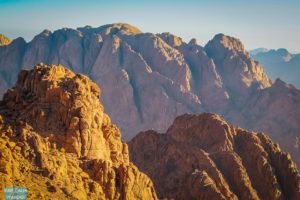 But an interesting thing is taking place. I started this project believing that mountains played a significant role in much of religious literature--Christian as well as the other major religions. But I am not so convinced that I am completely right about that. My first search is telling me that what is significant is place and that depending on the origin of one's religious stories and tradition that might be the mountains or water or the forest or the desert.I am starting to wonder if mountains play a significant role in my religious tradition because the Bible is based in an area of the world dotted with numerous hills and mountains. I know my spirituality is rooted in the mountains, but that is because I was born in the mountains of Montana and raised at the foot of the Colorado Rockies.This is why I started with John Denver's song Rocky Mountain High. The mountains play a central role in this song, but the central issue is not the mountains. It is the spiritual awareness that one has found home. For John Denver's subject and for me the mountains seem to call out, "Come home. Come home." But I know of many other people for whom the ocean is home. I even know of others who breathe a sigh of relief as they drive back through the cornfields of Iowa. I have a sneaking suspicion that as I study other religious traditions what will tie them together will not be the spiritual significance of mountains but the spiritual yearning to "come home."Born again. Coming home. I think it's all the same thing.I arrive in Kathmandu, Nepal on September 17 and invite you into this journey.Keep the wheels turning!
But an interesting thing is taking place. I started this project believing that mountains played a significant role in much of religious literature--Christian as well as the other major religions. But I am not so convinced that I am completely right about that. My first search is telling me that what is significant is place and that depending on the origin of one's religious stories and tradition that might be the mountains or water or the forest or the desert.I am starting to wonder if mountains play a significant role in my religious tradition because the Bible is based in an area of the world dotted with numerous hills and mountains. I know my spirituality is rooted in the mountains, but that is because I was born in the mountains of Montana and raised at the foot of the Colorado Rockies.This is why I started with John Denver's song Rocky Mountain High. The mountains play a central role in this song, but the central issue is not the mountains. It is the spiritual awareness that one has found home. For John Denver's subject and for me the mountains seem to call out, "Come home. Come home." But I know of many other people for whom the ocean is home. I even know of others who breathe a sigh of relief as they drive back through the cornfields of Iowa. I have a sneaking suspicion that as I study other religious traditions what will tie them together will not be the spiritual significance of mountains but the spiritual yearning to "come home."Born again. Coming home. I think it's all the same thing.I arrive in Kathmandu, Nepal on September 17 and invite you into this journey.Keep the wheels turning!

